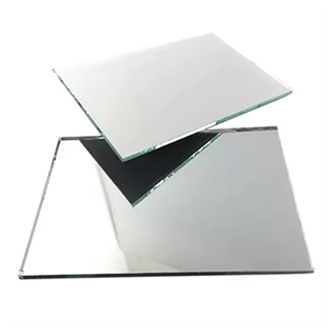Dec . 05, 2024 06:17 Back to list
Exploring the Wonders of Dichroic Glass Sheets in Art and Design
Exploring Dichroic Glass Sheets A Vibrant Fusion of Art and Science
Dichroic glass is a fascinating material that has captured the imagination of artists and designers alike. This unique glass features a striking optical property that allows it to display two different colors when viewed from different angles. The color-shifting phenomenon occurs due to a thin film of metal oxide that is applied to the surface of the glass, creating an interference effect. This article delves into the characteristics, applications, and allure of dichroic glass sheets.
What is Dichroic Glass?
Dichroic glass is created through a meticulous process where layers of metal oxides are deposited onto glass using techniques such as vacuum deposition or sputtering. The result is a glass sheet that reflects one color while transmitting another, depending on the angle of light and the viewer’s perspective. This interplay of color and light can produce stunning visual effects, making dichroic glass a popular choice among artists in jewelry making, stained glass art, and even architectural design.
The term dichroic comes from the Greek words di (two) and chroa (color), aptly describing the dual hues displayed by the material. The color range can vary dramatically, appearing as brilliant blues, vibrant reds, or subtle greens, often changing as the viewer moves around the piece. This dynamic characteristic adds depth and intrigue to any design.
Applications in Art and Design
One of the most prominent uses of dichroic glass is in the realm of jewelry design. Artisans often incorporate small pieces of dichroic glass into necklaces, earrings, and bracelets, where they can harness the glass’s vibrant colors to create eye-catching statements. The nature of dichroic glass enables each piece to be unique, capturing a blend of colors that reflect the wearer’s personality.
Beyond jewelry, dichroic glass is frequently used in stained glass work. Artists can craft intricate window panels and decorative glass elements that play with light and color throughout the day. The shimmering hues and dynamic appearances of dichroic glass can transform everyday spaces into extraordinary visual experiences. When sunlight shines through these pieces, they create a mesmerizing display of colors that dance across surfaces, bringing life to any environment.
dichroic glass sheets

Architects and designers are also embracing dichroic glass in commercial and public projects. Buildings featuring dichroic glass can use it not only for aesthetic purposes but also to control how light interacts with spaces. The ability to change color based on the time of day or the viewer’s perspective makes dichroic glass an innovative material for creating dynamic environments that encourage exploration and curiosity.
Advantages of Dichroic Glass
Aside from its unparalleled aesthetic qualities, dichroic glass is also durable and versatile. It can withstand harsh weather conditions, making it suitable for both indoor and outdoor applications. Its resistance to fading and scratching ensures that its vibrancy endures over time, allowing artists and designers to rely on its longevity.
Moreover, the popularity of dichroic glass is bolstered by the growing interest in personalized and one-of-a-kind items. As mass production becomes more commonplace in many industries, consumers are seeking out products that reflect individuality and craftsmanship. Dichroic glass offers a way to satisfy this desire, ensuring that each piece is as unique as the person who possesses it.
Conclusion
Dichroic glass sheets embody a beautiful intersection of art and science, offering a tantalizing blend of colors that captivate the observer. As an artistic medium, it provides endless possibilities for creativity, allowing artists and designers to push boundaries and explore new dimensions in their work. Whether used in jewelry, stained glass, or architectural applications, dichroic glass continues to enchant and inspire.
In an increasingly digital world, the allure of materials like dichroic glass serves as a reminder of the beauty that can be achieved through traditional craftsmanship and innovative technology. As artists continue to experiment with this unique glass, the future looks bright, vibrant, and full of color.
-
Safety and Style with Premium Laminated Glass Solutions
NewsJun.24,2025
-
Reinvents Security with Premium Wired Glass
NewsJun.24,2025
-
Premium Float Glass Line for Modern Architecture
NewsJun.24,2025
-
Low Emissivity Glass for Energy-Efficient Architecture
NewsJun.24,2025
-
High-Performance Insulated Glass Solutions for Modern Architecture
NewsJun.24,2025
-
Elevates Interior Style with Premium Silver Mirror
NewsJun.24,2025
Related PRODUCTS














